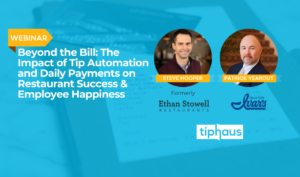This article is reprinted with permission from Optum. To see the original piece, click here.
For HHS agencies, the focus is on improving lives
To slightly misquote Benjamin Disraeli, there are lies, damn lies, and analytics.
Okay, let me say it another way. It’s not that “analytics” are actually lies, but – like “statistics” in Disraeli’s time – they can be misleading and, if not used and interpreted properly, can wind up promising much but delivering little. In health and human services (HHS) especially, unless the power of analytics is connected to actions that help improve the quality of lives of the people we serve, then the promise of analytics will remain unfulfilled.
[expander_maker id=”1″ more=”Read more” less=”Read less”]
In no area does such a technical term – analytics – carry with it such deep and emotional humanitarian and societal implications as in the Health and Human Services (HHS) sphere, where analytics have the potential to improve the health and well-being of hundreds of thousands of people on a daily basis.
The fact is that the sustained, intelligent, and effective use of analytics can serve as far more than an agency’s brainpower. Used correctly, analytics can also become part of an HHS agency’s heart and soul, the connective tissue between technology and people. Moreover, analytics can help agencies deliver the right services to the right individual in a manner that has the greatest positive impact on their mental and physical health.
But to make that happen, we have to focus on analytics that impact people rather than processes, that drive performance and action rather than serve as the basis for producing reports; that connect citizens with the services they need and most especially, that give us a view of where we’re going rather than merely where we’ve already been.
Static dashboards that show us the situation that exists today are fine, but a real-time dashboard that inspires best actions and helps demonstrate future trends and individual paths represents the real coin of the HHS realm. In other words, analytics that are prospective, prescriptive, proactive, and precision-like – rather than merely retrospective – offer us valuable information, and with it, virtually limitless potential to help people in more efficiently cost effective ways.
Consider that analytics can help improve population health across a broad swath of individuals who otherwise might struggle to live productive and quality lives; help working families connect with food and transportation to meet their everyday needs; help agencies determine how best to deal with the social needs and health issues among their homeless populations and other vulnerable groups; and help reduce the devastating and debilitating consequences of chronic conditions such as diabetes, asthma, coronary disease, mental health issues, and isolationism, to name a few. In concert with the vast ranges of clinical data, HHS agencies can now more effectively have 360-degree views of the individuals they serve.
Last summer, Optum partnered with the American Public Human Services Agency (APHSA) and the University of Chicago to host a weekend HHS Analytics Symposium, where I listened to riveting accounts of the manner in which states are bringing “compelling humanity” to the “analytics” conversation, and how they are working to make analytics a bridge to the future. I was struck by the number of innovative ways HHS agencies across the country were (and are) sifting through vast amounts of data to unearth the nuggets that will truly benefit the people they serve, now and in the future – and indeed, what better goal can agencies with “services” in their name aspire to?
We learned from Dr. Jennifer Walthall how Indiana is combining multiple datasets and programs to create customized analytic solutions, including, for example, how Medicaid coverage (or lack of it) affects prisoner recidivism; how Michigan has integrated foster care records with physical and behavioral health data to develop the most meaningful interventions for the State’s foster-care children; how Dakota County, Minnesota is combining analytics in areas such as food and nutrition, education, housing, environmental health, and employment to increase the stability and self-sufficiency of the people it serves, as well as improve overall community health.
The symposium was a roll-up-the-sleeves, workshop-oriented event that truly offered states an opportunity to talk to each other and share best practices, to talk about “analytics” in a way that placed their citizens at the center of the conversation. You can read APHSA’s full Summary Report of this exciting conference. I also urge you to take a look at recent articles that APHSA has published in its Policy & Practice publication that offer further insights on how agencies can make the best use of analytics and develop an analytics culture among staff professionals.
Attendees found the event so valuable and provided such positive feedback that – I’m happy to say – we’ll be partnering with APHSA to hold our Second Annual Analytics Symposium this summer (more details will be forthcoming).
And as positive as the symposium was about the promise of analytics, just as insightful was the candor of discussions among participants on what’s needed to make further progress: strong data quality and sensible and clear data governance practices; developing trust across bureaus, agencies, and departments; balancing access to data with the ever-growing issues of privacy and security; hiring and training staff members to build a “culture of analytics” across an HHS agency team. This portion of the discussion made it clear that while we’ve made substantial progress in the use of data and analytics to make a real difference in the lives of people, we still have miles to go – and vendors need to step up and work side by side with states to help them realize their worthwhile goals and visions.
Our symposium made me feel optimistic about this endeavor. HHS professionals are working hard every day to make a difference in their communities – dedication that will transform HHS services across the country. This commitment reminds us that when we talk about “analytics” in the HHS world, we’re not focusing merely on data and technology, but on improving the quality of citizens’ lives on a daily basis. By keeping that in mind, the HHS analytics journey promises to be beneficial and rewarding.
About the Author:
Andrew G. Cone
Sr. Vice President, State Government Solutions
Andrew Cone leads solution and business development / strategy for Optum State Government. His experience spans the health spectrum, including commercial, government (Medicare and Medicaid), payer, provider and pharmacy benefit services. A graduate of Hamline University in St. Paul, Minnesota, his 30 + year career includes business and software development, service delivery, and consumer engagement.
[/expander_maker]




























